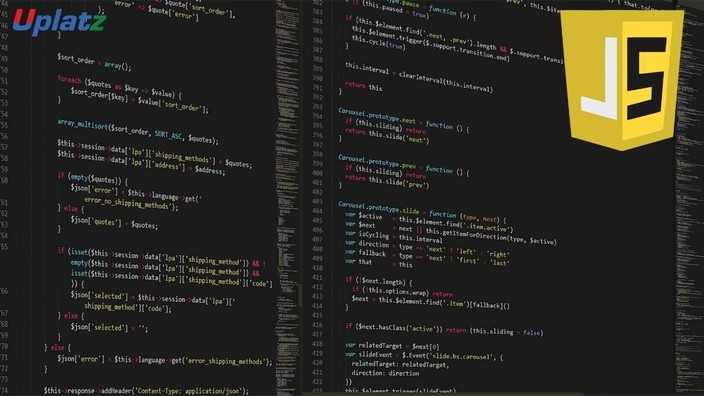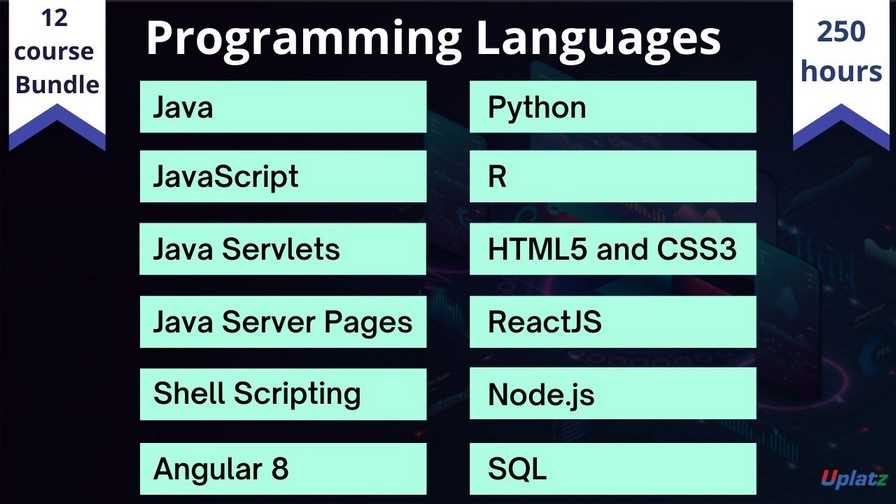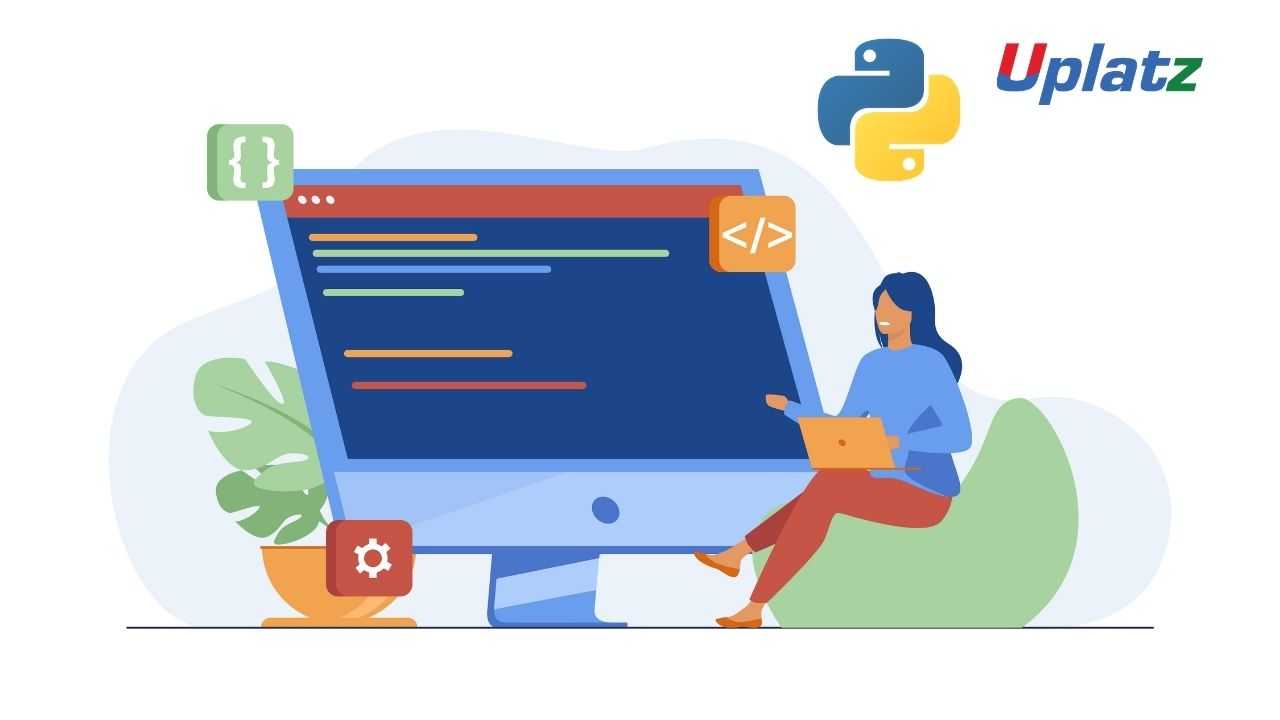Blockchain
Learn the technical aspects of public distributed ledgers, how blockchain works, cryptocurrencies, and smart contracts. Become a Blockchain Developer.Preview Blockchain course
View Course Curriculum Price Match Guarantee Full Lifetime Access Access on any Device Technical Support Secure Checkout Course Completion Certificate 95% Started a new career
BUY THIS COURSE (
95% Started a new career
BUY THIS COURSE (GBP 12 GBP 29 )-
 93% Got a pay increase and promotion
93% Got a pay increase and promotion
Students also bought -
-

- JavaScript Programming
- 35 hours
- GBP 12
- 518 Learners
-

- Bundle Course - Programming Languages
- 250 Hours
- GBP 22
- 2454 Learners
-

- Numerical Computing in Python with NumPy
- 20 Hours
- GBP 12
- 786 Learners

Based on a peer-to-peer (P2P) topology, Blockchain is a distributed ledger technology (DLT) that allows data to be stored globally on thousands of servers – while letting anyone on the network see everyone else's entries in near real-time. That makes it difficult for one user to gain control of, or game, the network.
A blockchain is, in the simplest of terms, a time-stamped series of immutable records of data that is managed by a cluster of computers not owned by any single entity. Each of these blocks of data (i.e. block) is secured and bound to each other using cryptographic principles (i.e. chain).
The blockchain is a simple yet ingenious way of passing information from A to B in a fully automated and safe manner. One party to a transaction initiates the process by creating a block. This block is verified by thousands, perhaps millions of computers distributed around the net. The verified block is added to a chain, which is stored across the net, creating not just a unique record, but a unique record with a unique history. Falsifying a single record would mean falsifying the entire chain in millions of instances. That is virtually impossible. Bitcoin uses this model for monetary transactions but it can be deployed in many other ways.
Uplatz offers this comprehensive Blockchain course. Gain a fundamental understanding of blockchain technology and its components. Learn how such applications as cryptofinance makes use of the blockchain for decentralized, peer-to-peer transaction processing. Apply your knowledge of blockchain technology to enhance your trust and confidence in cryptocurrency trading and other situations where the blockchain is used.
This Blockchain training consists of the following components:
1)Blockchain
Begin your exploration of blockchain technologies with a look at fundamental blockchain concepts along with an application in which blockchain technology plays a critical role — cryptofinance. This course also introduces distributed digital systems in terms of software and network architecture, and shows how these systems underlie the functionality of the blockchain. In this and the following courses in the specialization you'll have a chance for hands-on-practice to cement your learning.
2)Cryptography and Hashing
Continue learning about blockchain technology by diving into the nature of ownership and how the blockchain is one way to approach decentralized transaction handling. This course also demystifies cryptography and hashing, which are critical for authenticating users and guaranteeing transaction privacy.
The Merkle Tree and Cryptocurrencies
Apply what you have learned about cryptography and hashing in previous blockchain to the Merkle Tree, which underlies the process of adding new blocks — representing new transactions — to the blockchain. This course also introduces the concepts of proof of work and proof of stake, which play an important part in ensuring the integrity of the blockchain.
3)The Blockchain System
Learn how the blockchain authenticates transactions and distributes data to peers — nodes connected to the network. This course shows you how multiple versions of a blockchain are reconciled into one, discusses blockchain limitations, and delves into organizational applications of blockchain technology.
Course/Topic 1 - Coming Soon
-
The videos for this course are being recorded freshly and should be available in a few days. Please contact info@uplatz.com to know the exact date of the release of this course.
Course/Topic 2 - Currently Unavailable - all lectures
-
This course is currently unavailable. Please send us an inquiry by clicking the Inquiry button in the header menu or simply send us an email at info@uplatz.com to explore more options for this course.
a).Understand how blockchain systems (mainly Bitcoin and Ethereum) work,
b).To securely interact with them,
c).Design, build, and deploy smart contracts and distributed applications,
d).Integrate ideas from blockchain technology into their own projects.
Blockchain – course curriculum
1). CS focused Physics
2). CS focused Chemistry
3). CS focused Maths
4). Focus on the specialisation - in this case, blockchain
5). Programming language
6). OS
7). Object-Oriented Programming
8). Software Development with a focus on blockchain
9). Database Management
10). Soft Skills
11). Industry and Manufacturing focused skills
The Blockchain. Certification ensures you know planning, production and measurement techniques needed to stand out from the competition.
Blockchain is a system of recording information in a way that makes it difficult or impossible to change, hack, or cheat the system. A blockchain is essentially a digital ledger of transactions that is duplicated and distributed across the entire network of computer systems on the blockchain.
Blockchain defined: Blockchain is a shared, immutable ledger that facilitates the process of recording transactions and tracking assets in a business network. An asset can be tangible (a house, car, cash, land) or intangible (intellectual property, patents, copyrights, branding).
By spreading its operations across a network of computers, blockchain allows Bitcoin and other cryptocurrencies to operate without the need for a central authority. This not only reduces risk but also eliminates many of the processing and transaction fees.
This certification course is suitable for technology and business professionals who want to understand the methodology of blockchain and its application across industries. In this course, the core concepts and blockchain platform, its growth and evolution and all the use cases it is relevant to are discussed in detail.
Uplatz online training guarantees the participants to successfully go through the BlockchainCertification provided by Uplatz. Uplatz provides appropriate teaching and expertise training to equip the participants for implementing the learnt concepts in an organization.
Course Completion Certificate will be awarded by Uplatz upon successful completion of the Blockchain Online course.
The Blockchain Draws an average salary of $113,000 per year depending on their knowledge and hands-on experience.
Blockchain development might be the most marketable career path today because people are eager to realize all the benefits of Blockchain. These individuals require absolute attention to detail as theirs is a high ranking position. Blockchain developers are programmers who create applications for blockchain.
With the number of job openings exceeding qualified developers, blockchain development is one of the fastest rising fields in the labor market. A successful career in blockchain engineering offers multiple job paths and an opportunity to work on innovative projects using cutting-edge technology.
Blockchain Security engineer is another highest paying blockchain job, and it has also gained popularity in the IT industry. The Blockchain security engineer's responsibility is to work directly with the developers and audit their code in terms of security.
Note that salaries are generally higher at large companies rather than small ones. Your salary will also differ based on the market you work in.
a).Software Developers.
b).Blockchain Developer.
c).Blockchain Consultant.
Q1.Public Blockchain
Ans-A Public blockchain is a kind of blockchain which is "for the people, by the people, and of the people." There is no in-charge it means anyone can read, write, and audit the blockchain. It is an open-source, distributed, and decentralizes public ledger so anyone can review anything on a public blockchain. They are considered to be Permissionless blockchain.
Q2. Private Blockchain
Ans-A Private blockchain is a private property of an individual or an organization. It is controlled by a single organization that determines who can read it, submit the transaction to it, and who can participate in the consensus process. They are considered to be permissioned blockchain.
Q3. Consortium Blockchain or Federated Blockchain
Ans-In this blockchain, the consensus process is controlled by a pre-selected group, i.e., group of companies or representative individuals. These pre-selected group is coming together and making decisions for the best benefit of the whole network. Such groups are also called consortiums or a federation that's why the name consortium or federated blockchain.
Q4).Where is a blockchain stored?
Ans-The blockchain can be either stored as a flat file or as a database.
Q5).What are the types of records that are present in the blockchain database?
Ans-There are two types of records in a blockchain database.
a).Transactional Records
b).Block Records
c).Both the records can easily be accessed and can integrate with each other without following any complex algorithm.
Q6).List the key features of blockchain?
Ans-The essential properties of a blockchain are:
a).Decentralized Systems
b).Distributed ledger
c).Safer & Secure Ecosystem
d).Fast
e).Low Transaction Fees
f).Fault-Tolerant
g).Minting
Q7).Name some popular platforms for developing blockchain applications.
Ans-Some of the popular platforms for developing blockchain are:
a).Ethereum
b).Hyperledger Sawtooth
c).Quorum
d).Ripple
e).R3 Corda
f).Qtum
g).IOTA
h).EOS
Q8).What do you mean by blocks in the blockchain technology?
Ans-A Blockchain consists of a list of records(some or all of the recent transaction). Such records are stored in blocks. Each time a block gets completed, a new block is generated. The block linked with other blocks constitutes a chain of blocks called Blockchain. Each block, after added into the blockchain, will be stored as a permanent database. We cannot delete or reverse any block from the blockchain.
Q9).Every block of Blockchain consist of what elements?
Ans-Every block must include these three things:
a).A hash pointer to the previous block
b).Timestamp
c).List of transactions









